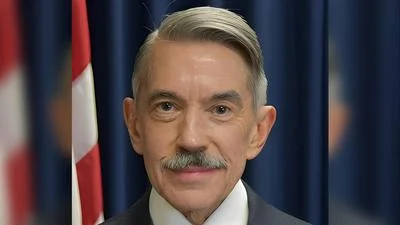More information about Peru is available on the Peru Page and from other Department of State publications and other sources listed at the end of this fact sheet.
U.S.-PERU RELATIONS
The United States established diplomatic relations with Peru in 1827, six years after Peru’s independence from Spain. The United States and Peru enjoy a strategic partnership based on the shared values and interests of democracy, security, mutually beneficial trade, and human rights. The United States partners with Peru in support of Peru’s aspirations for regional and global leadership, and to continue the fight against transnational criminal organizations, promote economic opportunities for U.S. businesses, and strengthen citizen safety and security.
Pandemic Response
The Government of Peru worked tirelessly with the U.S. Embassy in Lima throughout 2020 during the response to the COVID-19 pandemic. As Peru has continued to experience high infection rates and suffers the world’s highest cumulative per capita death rate, the United States has provided over $20.54 million in support to Peru to address the impacts of COVID-19, which includes more than $10 million in humanitarian assistance as well as a donation of two million doses of the Pfizer vaccine.
U.S. Assistance to Peru
The United States provided more than $75 million in Foreign Assistance funds to Peru in Fiscal Year 2019. The United States and Peru have strong cooperation across a range of shared priorities, including rule of law, security, and development relationships. These funds support shared U.S. and Peruvian priorities, including countering narcotics through alternative livelihood program; combatting corruption, environmental crimes, and trafficking in persons; fostering regional security and peacekeeping; and promoting effective governance and economic prosperity.
The U.S. Agency for International Development has a 59 year history in Peru, investing more than $3.6 billion in more than 1,500 programs to promote economic, social, and political development. Today, USAID’s targeted strategy supports the government of Peru to address current limitations in government effectiveness and to prevent corruption, in line with Peru’s own development goals and U.S. foreign policy.
Given Peru’s comparative economic development (before the COVID-19 pandemic) and sizable domestic resources, USAID’s role shifted from directly financing basic services to providing specialized technical assistance for the Government of Peru to better invest its own resources in three areas: 1) economic and social development to sustain coca reductions; 2) increased public integrity to reduce corruption; and 3) sustainable environment and natural resource management to expand economic and social benefits. USAID also works to catalyze private sector investment in development. The FY 2019 budget for USAID work in Peru is $49 million. USAID supports special regional initiatives, such as responding to the Venezuelan migration crisis and promoting conservation of the Amazon biome (a U.S. Congressional directive).
The Department of State, USAID, and Department of Labor each provide foreign assistance to Peru to combat trafficking in persons - a priority for both countries. In 2017, senior officials signed the U.S.-Peru Child Protection Compact (CPC) Partnership, a jointly-developed five-year plan to build on Peru’s existing efforts to
prosecute and punish perpetrators of child trafficking; identify child trafficking victims and coordinate the provision of comprehensive protective services; and prevent child trafficking from occurring. To date, the State Department has provided $8.9 million in support of this CPC Partnership and is currently investing an additional $1.43 million in other projects to combat trafficking in persons.
The United States supports the objective of shared prosperity with Peru through supporting transparent procurement processes and sound mineral sector governance. Through the U.S. National Oceanic and Atmospheric Administration, the United States is helping Peru combat illegal, unreported, and unregulated fishing which threatens both fragile ecosystems and an important export industry including hundreds of thousands of jobs. In addition, the Department of Defense Southern Command entered into an agreement in June 2021 with the international nonprofit organization Global Fishing Watch to detect, deter, and identify illegal, unreported, and unregulated fishing in Peru and throughout the hemisphere.
In 2018, International Narcotics and Law Enforcement (INL) Lima celebrated 40 years of bilateral cooperation in the fight against narco-trafficking and organized crime, in addition to collaborating toward the enhanced peace and security of our two nations. The FY 2021 budget for INL Lima is $37 million. INL support counternarcotics, justice sector capacity building, anti-money laundering, asset forfeiture, police professionalization, and drug demand reduction programs.
Since 2006, the Department of Defense Southern Command, through its Humanitarian Assistance Program, has invested over $50.9 million in 313 projects in Peru including the construction of 18 Regional Emergency Operations Centers. At the request of the Peruvian government, the U.S. Department of State and USAID have provided more than $100 million to support humanitarian assistance efforts in Peru in response to the influx of Venezuelan refugees and migrants.
Approximately 4,000 Peace Corps Volunteers have served in Peru since 1962 and continue to work with their communities on projects focused on the community economic development, health, water and sanitation, and youth development. The United States remains a primary destination for Peruvian students seeking to study abroad. More than 3,500 Peruvians study in the United States and almost 4,000 U.S. students study in Peru. The Fulbright Commission in Peru, supported by both governments, plans and administers Fulbright Program educational exchanges. Through the Fulbright Program, nearly 1,900 Peruvian scholars, professionals and students have been to the U.S. and more than 1,200 Americans have come to Peru to study, teach, and conduct research and increase mutual understanding between the countries.
Through a network of eight binational centers (BNCs), with a total of 32 branch offices countrywide, the United States provides opportunities for English instruction to an average of 90,000 students every month, as well as educational exchange, cultural outreach, and academic advising at EducationUSA centers for students wishing to study in the United States. BNCs have an online reach with over 1.4 million followers combined through their social media accounts. As a result of the pandemic, English language classes, EducationUSA advising, and other activities have become virtual.
Since 2001, Peru has received through the Ambassadors Fund for Cultural Preservation over $2 million toward 27 projects throughout Peru. All cultural patrimony programs support the Memorandum of Understanding (MOU) for cultural patrimony protection signed between Peru and the U.S. in 1997 and renewed every 5 years. This MOU imposes import restrictions on archaeological and certain Colonial period material from all areas of Peru and has allowed for the repatriation of over 2000 artifacts. The next extension of the MOU will be considered in 2022.
Bilateral Economic Relations
Economic and commercial ties have deepened with the 2009 entry into force of the U.S.-Peru Trade Promotion Agreement (PTPA), a cornerstone of the bilateral relationship. The PTPA sets high standards for both countries on market access, investment safeguards, intellectual property rights, and environmental and labor rights protections. Two-way trade in goods between the United States and Peru has increased from $9.1 billion in 2009 to $15.8 billion in 2019, driving growth and employment in both countries. Bilateral food and agricultural trade jumped from $1.5 billion in 2009 to $4 billion in 2020 - up 167 percent. The number of U.S. citizen visitors to Peru increased 40 percent in the last five years and now exceeds 570,000 per year.
The United States is working with Peru to combat wildlife trafficking while improving enforcement as was highlighted in 2019 at the First High Level Conference on Illegal Wildlife Trade in the Americas held in Lima, Peru. As a transnational crime, wildlife trafficking is linked to criminal organizations, corruption, undermining the rule of law, and harming the livelihood of communities.
As part of the founding group of the Energy Resource Governance Initiative (ERGI), Peru and the United States are working together to develop and share resource management best practices through a toolkit on governance and transparency. The goal is to create sound governance and resilient supply chains in the energy minerals sector, as well as to meet the expected demand for clean energy technologies.
As part of the founding group of the Energy Resource Governance Initiative (ERGI), Peru and the United States are working together to develop and share resource management best practices through a toolkit on governance and transparency. The goal is to create sound governance and resilient supply chains in the energy minerals sector, as well as to meet the expected demand for clean energy technologies.
Peru’s Membership in International Organizations
Peru and the United States belong to a number of the same international organizations, including the United Nations, Organization of American States, Asia-Pacific Economic Cooperation, International Monetary Fund, World Bank, and World Trade Organization.
Bilateral Representation
Principal U.S. Embassy officials are listed in the Department’s Key Officers List.
The U.S. Embassy maintains a Consular Agency in Cusco for emergency and other services to U.S. citizens resident or traveling to the Cusco region.
Peru maintains an embassy in the United States at 1700 Massachusetts Avenue, NW, Washington, DC 20036; tel. (202) 833-9860. The Embassy of Peru in the United States provides consular services through its Consulates General in Atlanta, Boston, Chicago, Dallas, Denver, Hartford, Houston, Los Angeles, Miami, New York, San Francisco, Washington, and New York.
More information about Peru is available from the Department of State and other sources, some of which are listed here:
CIA World Factbook Peru Page
U.S. Embassy
USAID Peru Page
History of U.S. Relations With Peru
Office of the U.S. Trade Representative Countries Page
U.S. Census Bureau Foreign Trade Statistics
Export.gov International Offices Page
Millennium Challenge Corporation: Peru
Library of Congress Country Studies
Travel Information
Source: U.S. Department of State, Bureau of Western Hemisphere Affairs









